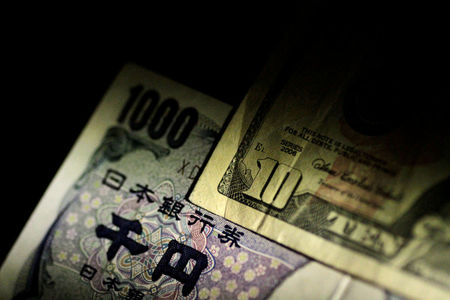Forex
Asia FX rises ahead of nonfarm payrolls; yen firms amid intervention watch

Investing.com– Most Asian currencies advanced slightly on Friday, recovering further as the dollar weakened ahead of key payrolls data, while the Japanese yen strengthened sharply amid speculation over potential government intervention.
Elsewhere, the firmed slightly with the Labour party set to log a sweeping win in the UK general election.
The and sank to three-week lows in holiday-thinned trade, while growing expectations of interest rate cuts also dented the greenback. Focus was now squarely on key data, due later on Friday, for more cues on interest rates.
While a softer dollar did benefit Asian markets, gains were limited as a potential escalation in tensions between China and Taiwan dented sentiment.
Japanese yen firms sharply, USDJPY sinks amid intervention chatter
The Japanese yen was among the best performers in Asia, with the pair, which gauges the number of yen needed to buy one dollar, sinking 0.4% to 160.63.
The sharp strengthening in the yen sparked speculation over whether the Japanese government had intervened in currency markets to support the currency. The government was expected to potentially intervene around the July 4 U.S. market holiday, taking advantage of lower trading volumes.
Recent weakness in the yen was spurred by growing bets that the Bank of Japan will have limited headroom to tighten policy further, amid persistent weakness in the Japanese economy.
Weak data for May furthered this notion on Friday.
Chinese yuan flat as Taiwan tensions increase
The Chinese yuan lagged its peers, with the pair hovering around seven-month lows.
Sentiment towards China was further dented by reports that Beijing seized a Taiwanese fish trawler, and had also deployed aircraft around the Taiwan strait.
The reports came following an earlier report that Taiwanese firms were withdrawing their staff from China, after Beijing outlined strict punishments for proponents of an independent Taiwan.
Any escalation in tensions with Taiwan could draw more scrutiny towards China, attracting more sanctions from the West.
The Taiwan dollar’s pair fell 0.2%.
Other Asian currencies advanced slightly, as a U.S. market holiday made for scant trading cues. The Australian dollar’s pair rose 0.1%.
The South Korean won’s pair fell 0.1%, while the Singapore dollar’s pair fell 0.1%.
The Indian rupee’s pair fell slightly, but remained close to recent record highs.

 Forex3 years ago
Forex3 years agoForex Today: the dollar is gaining strength amid gloomy sentiment at the start of the Fed’s week

 Forex3 years ago
Forex3 years agoUnbiased review of Pocket Option broker

 Forex3 years ago
Forex3 years agoDollar to pound sterling exchange rate today: Pound plummeted to its lowest since 1985

 Forex3 years ago
Forex3 years agoHow is the Australian dollar doing today?

 Cryptocurrency3 years ago
Cryptocurrency3 years agoWhat happened in the crypto market – current events today

 World3 years ago
World3 years agoWhy are modern video games an art form?

 Commodities3 years ago
Commodities3 years agoCopper continues to fall in price on expectations of lower demand in China

 Economy3 years ago
Economy3 years agoCrude oil tankers double in price due to EU anti-Russian sanctions


























